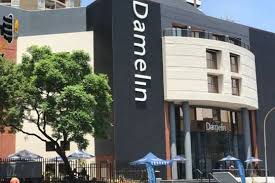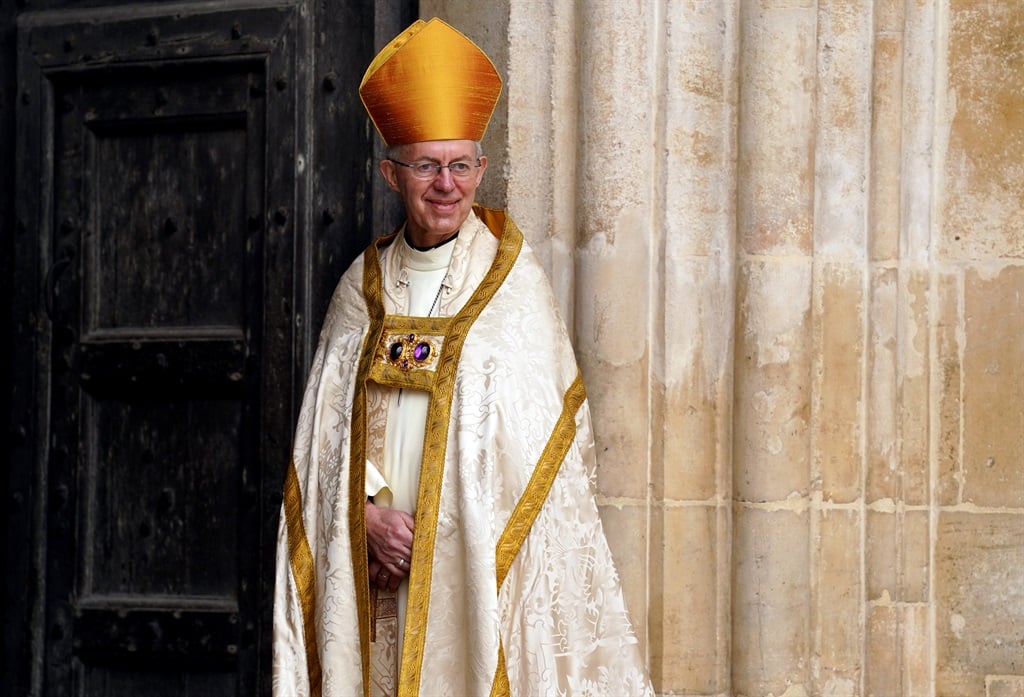(Graphic: John McCann/M&G)
The Irish revolutionary Michael Collins has been pictured in a back room of the General Post Office (GPO) in Dublin, shaking his head in disgust over the chaotic miscarriage of the 1916 republican uprising against British rule.
The rebellion seemed a disaster for the independence movement. Sixteen leaders were executed for treason and thousands interned after British shells smashed their GPO headquarters.
The Royal Navy had intercepted a shipload of arms destined for the rebels and a planned national uprising failed to happen.
“And what if excess of love/Bewildered them till they died?” lamented the poet WB Yeats, while admiring their suicidal bravery.
How was it, then, that just five years later British prime minister Lloyd George would settle with the Irish Republican Army (IRA) in a treaty that gave Ireland self-government?
The pre-World War I outlook for what historians call “advanced nationalism” in Ireland was glum — the IRA’s forerunner, the Irish Republican Brotherhood, had just 1 500 members.
But, as in apartheid South Africa, resistance snowballed and became more militant as the British tightened the screws and the domestic and international cost of repression mounted.
In the 1918 election the IRA’s political wing, Sinn Féin (“We ourselves”), swept away the Irish Parliamentary Party, which had sought Home Rule — essentially dominion status along Australian lines under the British Crown — by working through Westminster.
Britain refused to recognise Dáil Éireann, the Irish counter-parliament formed after the republican electoral landslide, setting the stage for armed revolt.
Throughout the gathering storm, the British government showed thinly veiled support for Protestants that had been injected into the northern counties in a series of anti-Catholic “plantations” initiated in the 16th century.
On the principle that “Home Rule is Rome Rule”, Protestant unionists implacably opposed any move towards even limited independence.
They and the Tories who courted their parliamentary support forced a postponement of Home Rule legislation for the duration of the World War. By then the struggle had moved on.
In part, British policy on Ireland was driven by imperial arrogance and racism. For Tory leader Bonar Law the Irish were “an inferior race”; Winston Churchill wrote of “a diabolical strain in the Irish character … a treacherous, assassinating, conspiring trait … that prevented them from being a great responsible nation”.
The British reply to Irish resistance was, as in South Africa, escalating brutality.
The leaders of the 1916 uprising were shot after being court-marshalled, with the barrister Patrick Pearse so badly wounded that he died strapped to a chair.
Yet the executions backfired. Crowds had jeered the arrested republicans as they were marched to Richmond Barracks — after their “blood sacrifice” public sympathy veered sharply behind them.
In the shift to guerrilla war, the opening salvo was the assassination of two Royal Irish Constabulary (RIC) men in rural Tipperary in January 1919.
The Dáil Éireann then called for the social ostracism of the RIC, considered “the eyes and ears of the enemy”. Police barracks were attacked and burnt when abandoned.
By September 1 900 members had quit and the RIC was largely driven from the Irish countryside, allowing alternative state structures such as republican courts to spring up.
Britain’s response was to install Field-Marshal John French as lord lieutenant of Ireland — a man who, remarks historian Michael Hopkinson, typified the “bone-headed stubbornness” of military men confronting political disorder.
His solution was to arrest Sinn Féin leaders for treason and ban its meetings. He also backed Lloyd George’s abortive attempt to extend conscription to Ireland, resisted by radicals and moderates alike.
The policy was never adopted, but French is known to have favoured population removals to allow the bombing of the IRA from the air.
Then in a dramatic escalation in March 1920, Churchill sent in a reserve army to bolster the RIC.
The “Black and Tans”, so called because of their patchwork of police and army outfits, were an ill-trained and undisciplined force of mainly demobbed soldiers who took revenge on civilians up and down Ireland when attacked.
Yeats described the 8 000 Tans as “partly drunk and wholly mad”.
In a deadly cycle of tit-for-tat reprisals, the Tans gutted the centre of Ireland’s second city, Cork. “I never experienced such orgies of murder, arson and looting,” one Tan commander told an inquiry. Later, reprisals would become official policy.
For the British Empire, the widely publicised spectacle of homeless families outside burnt-out houses and shops was a reputational disaster.
As in South Africa, Britain clung to the view that there was no Irish war, only the terrorism and intimidation of a handful of criminals.
And, like the South Africans, it was prevented from fully unleashing its coercive powers by the glare of world scrutiny. It was especially sensitive to opinion in the United States, home to millions of Irish immigrants.
The security forces accused it of a “slap and stroke” policy. Martial law was never applied across the whole of Ireland and censorship, for example, was not invoked.
The British intelligence system also foundered at the start. Despite a £10 000 reward, Michael Collins, the Mandela-style Dublin Pimpernel, cycled around the city and plotted attacks in its pubs without being arrested. (Legend has it that he once hid in the Jewish quarter disguised as an Orthodox Jew and cursed a Black and Tan in Yiddish.)
Hopkinson remarks that the Irish war was driven by intelligence. Collins, the IRA’s intelligence director and a man of extraordinary memory and grasp of operational detail, identified British spies using every possible resource, including wastepaper bins, housemaids and contacts in the seat of government, Dublin Castle.
His coup was the ruthless crippling of the British intelligence network in November 1920 by his “Squad” — ironically dubbed “the Twelve Apostles” — who assassinated 15 people and wounded four in gracious south Dublin in a single morning.
This starkly refuted Lloyd George’s claim that “we have murder by the throat”. As the dead officers were driven in a solemn funeral train through London, public confidence in government policy on Ireland was deeply shaken. Fear aroused by the Squad’s activities also critically interrupted the general flow of intelligence to the authorities, much as the “necklace” did in South Africa.
A further blow was the razing of the Customs House, the heart of the Irish civil service, in May 1921. Despite IRA losses — five killed and 80 captured — the operation has been likened for its shock effect to North Vietnam’s 1968 Tet offensive.
The two sides had reached stalemate — or more correctly, a ragtag force of poorly armed guerrillas had fought the mighty British Empire to a standstill.
Security force deaths rose from 44 in the first half of 1920 to 171 in the second half and 321 in the six months following. By the time of the truce, more than 440 IRA soldiers had died and 4 500 were interned, against just 2 000 in active service. An armistice was signed in July 1921 and a full treaty in December that year.
The Irish war served as a model and inspiration for anti-colonial campaigners worldwide. But it left a bitter, enduring aftertaste.
The de facto head of state and its most seasoned diplomat, Éamon de Valera, controversially stood back and left the treaty talks to others, including Collins.
De Valera claimed this gave him a “strategic advantage”. But cunning and ambition may have been the real spur.
Foreseeing that Britain would not concede on two key issues — freedom from submission to the Crown and the inclusion of the northern counties in the new state — he may have stepped back to preserve himself politically and weaken his rivals, above all Collins.
In a startling display of opportunism, he denounced the treaty from the podium and warned that the Irish might have to “wade through blood” to win their republic.
(At the height of the Irish conflict he had spent 18 months in the safety of the US, campaigning vainly for American recognition of the Irish Republic.)
A savage civil war between anti-treaty “irregulars” and government forces under Collins then followed. When the latter was killed in an ambush, De Valera, as leader of
a new republican party, Fianna
Fáil, ultimately went on to take the reins.
The party would tower over 20th century Irish politics. Only since
De Valera’s death in 1975 has Ireland thrown off the stifling, decades-long burden of his Catholic conservatism.
True to Britain’s instinctive bias, Lloyd George legislated the partition of Ireland in favour of northern Protestants before settling with the republicans of the south.
That grave historical injustice — the fruit of 800 years of Anglo-Norman colonial meddling and oppression — remains unremedied.
This is the major parallel between the two revolutions. Many would argue that South Africa’s colonial overhang has also not been fully dealt with.
Drew Forrest is a former deputy editor of the Mail & Guardian. He is on holiday in Ireland.





















Discussion about this post